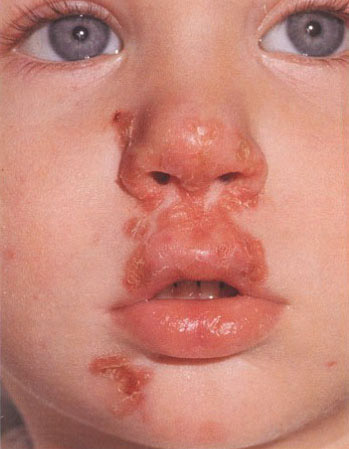
Rice. 12. In the photo, streptoderma in a child.

Rice. 13. In the photo, erysipelas of the lower leg caused by streptococcus bacteria.
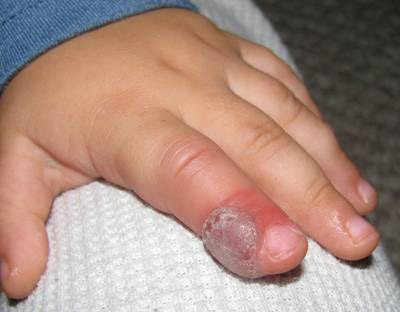
Rice. 14. In the photo panaritium.
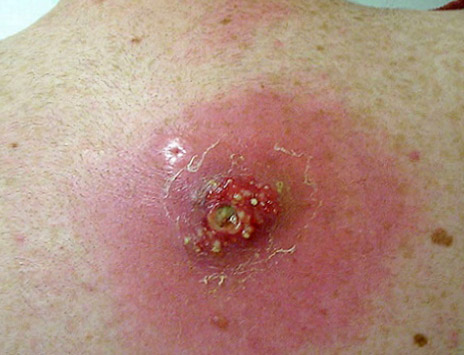
Rice. 15. In the photo, a carbuncle of the skin of the back.
Staphylococci on the skin
Fungi of the genus Microsporum cause microsporia disease. The source of infection are cats with trichophytosis, less often the disease is transmitted from dogs. Mushrooms are very stable in the external environment. They live on skin scales and hair for up to 10 years. Children are more likely to get sick, as they are more likely to come into contact with sick homeless animals. In 90%, fungi infect vellus hair. Much less often, microsporum affects open areas of the skin.
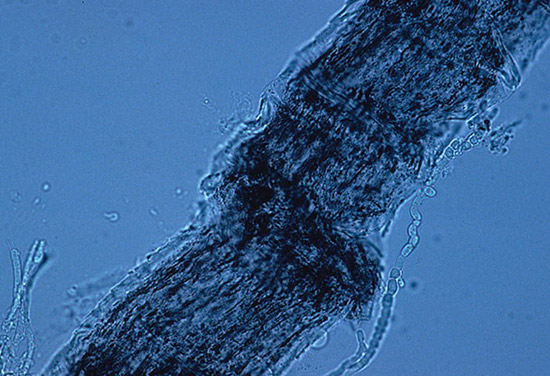
Rice. 22. Photo of fungi of the genus Microsporum (Microsporum).
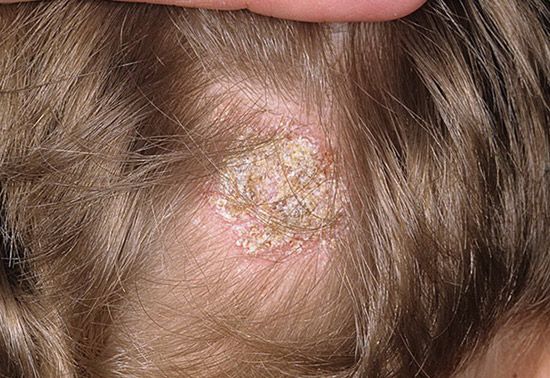
Rice. 23. In the photo, a fungus of the scalp (microsporia). On the scalp, the lesion is covered with asbestos scales and crusts.
The disease is highly contagious (contagious). The person himself and his things are the source of infection. With this form of trichophytosis, open areas of the body are also affected, but with a prolonged course, the skin of the buttocks and knees can be affected.
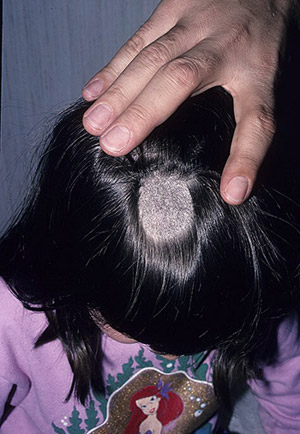
Rice. 24. In the photo, a fungus of the scalp (trichophytosis).
Multicolored lichen is a fairly common disease. The disease is more common in young and middle-aged people. It is believed that the cause of the disease is a change in the chemical composition of sweat with excessive sweating. Diseases of the stomach and intestines, the endocrine system, neurovegetative pathology and immunodeficiency are the trigger for the development of pityriasis versicolor.
Mushrooms infect the skin of the body. Lesions are often noted on the skin of the chest and abdomen. Much less often affects the skin of the head, limbs and inguinal regions.
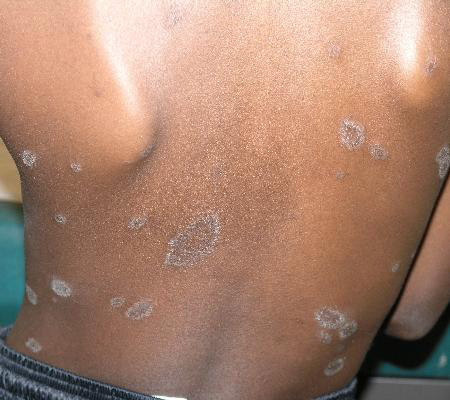
Rice. 25. In the photo of the skin of the back.
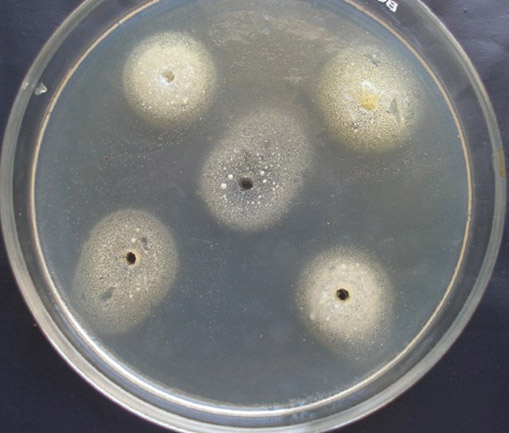
Rice. 26. In the photo, fungi Malassezia furfur (growth of colonies on a nutrient medium).
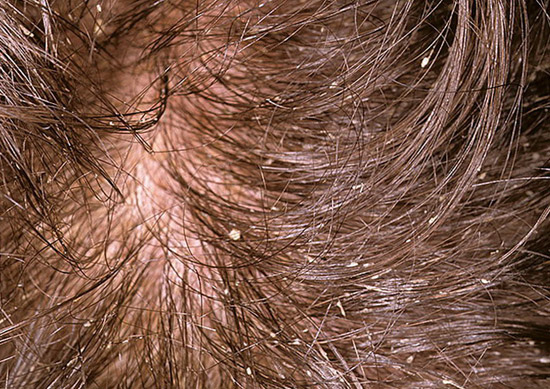
Rice. 27. The photo shows seborrheic dermatitis. Damaged scalp.
Mushrooms Pityrosporum orbiculare (P. orbiculare) affect the skin of the trunk. Pathogens are concentrated in places of the greatest accumulation of sebum, which is produced by the sebaceous glands. Sebum causative agents of seborrheic dermatitis use in the course of their life. The rapid growth of fungi is provoked by neurogenic, hormonal and immune factors.
With candidiasis, changes appear, first of all, on the skin of large and small folds of the body. With the development of the disease, the lesions spread to the skin of the trunk.
Somewhat less often lesions are noted on the skin of the palms and soles. Fungi of the genus Candida infect the mucous membranes of the external and internal organs. Can cause systemic mycoses.
The disease often affects infants. Patients with diabetes mellitus and severe somatic pathology are at risk for candidiasis.
The disease lasts for a long time. Often recurs.
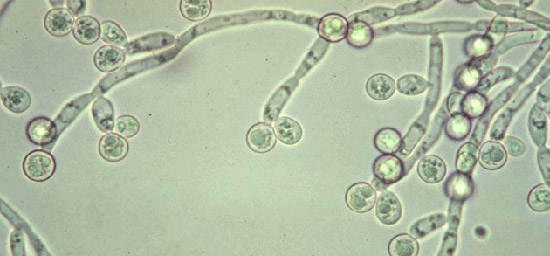
Rice. 28. Photo of fungi of the genus Candida (Candida albicans). View through a microscope.
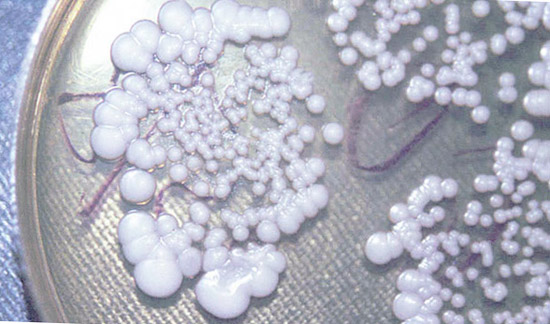
Rice. 29. Photo of fungi of the genus Candida (Candida albicans). Growth of colonies on a nutrient medium.
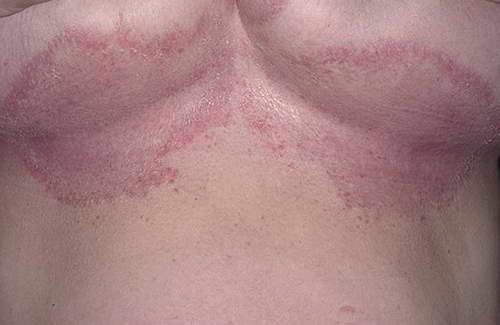
Rice. 30. In the photo, candidiasis of the skin of the folds of the chest.
Molds, non-dermatophytes more likely to cause fungal infections in humans
in tropical countries. They affect the nails and skin.
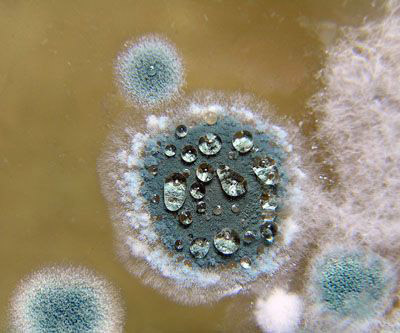
Rice. 31. The photo shows a colony of mold fungi.
bacteria in the intestines
The human body contains from 500 to 1000 different types of bacteria or trillions of these amazing residents, which is up to 4 kg of total weight. Up to 3 kilograms of microbial bodies is found only in the intestines. The rest of them is in the urogenital tract, on the skin and other cavities of the human body.
The human body is inhabited by both beneficial and harmful, pathogenic bacteria. The existing balance between the human body and bacteria has been polished for centuries. With a decrease in immunity, "bad" bacteria cause great harm to the human body. In some diseases, the process of replenishing the body with “good” bacteria is difficult.
Microbes fill the body of a newborn from the first minutes of his life and finally form the composition of the intestinal microflora by 10-13 years.
Up to 95% of the microbial population of the large intestine are bifidobacteria and bacteroids. Up to 5% are lactic acid bacilli, staphylococci, enterococci, fungi, etc. The composition of this group of bacteria is always constant and numerous. It performs the main functions. 1% are opportunistic bacteria (pathogenic bacteria). Bifidobacteria, Escherichia coli, acidophilus bacilli and enterococci inhibit the growth of opportunistic flora.
In diseases that reduce the body's immunity, intestinal diseases, long-term use of antibacterial drugs and in the absence of lactose in the human body, when the sugar contained in milk is not digested and begins to ferment in the intestine, changing the acid balance of the intestine, microbial imbalance occurs - dysbacteriosis (dysbiosis). , enterococci, clostridia, staphylococci, yeast-like fungi and proteus begin to multiply intensively. Among them, pathological forms begin to appear.
Dysbacteriosis is characterized by the death of "good" bacteria and the increased growth of pathogenic microorganisms and fungi. In the intestines, the processes of putrefaction and fermentation begin to prevail. This is manifested by diarrhea and bloating, pain, loss of appetite, and then weight, children begin to lag behind in development, anemia and hypovitaminosis develop.
Most popular